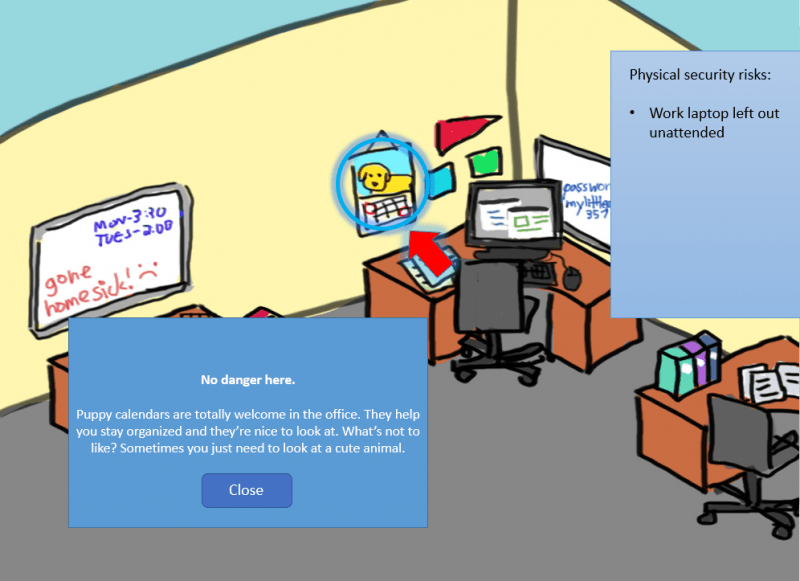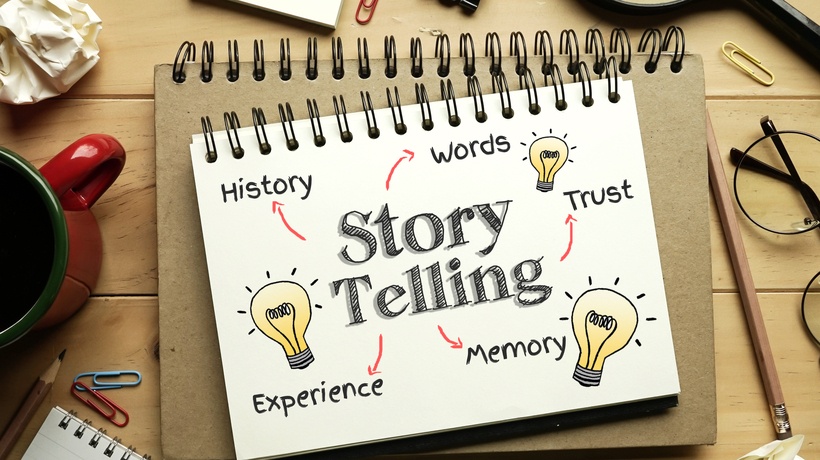How To Use Storytelling To Capture Learners’ Attention
Think about a movie you’ve seen recently, or a book you’ve read. Can you imagine the first scene?
It’s been weeks since I’ve seen The Martian, but I can still remember its opening moments: The howl of the wind, the red dust, and the sound of rockets.
Now think about an eLearning course from your recent experience. If it’s like many courses I’ve seen, it started with an introduction (“Welcome to Ruby’s Ravioli kitchen safety training!”), an overview of concepts that are obvious to everyone (“Kitchens can be dangerous places.”), and a few bullet points pretending to be learning objectives (“Today, you’ll learn about the importance of oven cleaning.”).
Do learners remember details from their eLearning as clearly as they recall scenes from recent films or novels? Probably not, but maybe it’s not fair to compare the eLearning industry to Hollywood. We’re making training, not entertainment, after all.
On the other hand, there are at least two important factors that we eLearning developers share with creators in the entertainment industry:
- We’re constructing an experience for people.
- The experience requires the person’s attention.
Modern storytelling takes many forms, but movies, books, video games, and comic books all draw upon effective strategies for capturing their consumers’ attention. That’s why I’m always a little bit surprised to see eLearning that starts with flat welcome text, because that doesn’t reflect what we know about capturing a person’s focus and keeping it.
Here are 4 storytelling principles that can apply to eLearning and capture learners’ attention:
1. Offer an interesting problem.
Perhaps the most effective way to grab a person’s attention is to ask them to solve a problem. As Dr. Michael Allen puts it:
“When do our senses become most acute? When are we most alive and ready to respond? It’s when we are at risk...when we see an opportunity to win and the possibility of losing.”
The Martian applies this approach by getting viewers to empathize with a character in a truly unique survival situation.
Fortunately, we don’t have to rely upon novelty to make problems interesting. We have access to stories and challenges that are immediately relevant to learners — the situations that they deal with every day on the job.
If you’re not sure what challenging situations your audience will find compelling, go out and interview some real learners. Ask questions like:
- What mistakes do people make?
- What type of restrictions do you deal with?
- What tips or tricks would you tell someone new to this role?
- What is the most difficult aspect of [specific task]?
- How do you know if you’ve done a good job?
(Additional questions on p. 24 of Leaving ADDIE for SAM: Field Guide)
2. Start with the action.
The Martian didn’t start by telling the audience that Mars is very dangerous (duh). Nor did it begin with a primer on Martian geography, soil chemistry, and atmospheric science (yawn).

“Before we start, let me tell you ten things you need to know about botany…”
Instead, the film begins with the NASA crew making an emergency departure from Mars and leaving astronaut Mark Watney behind, injured and millions of miles from his home planet.
Starting with the action doesn’t mean we have to present learners with life-or-death choices from the very first slide, although that might be appropriate for certain audiences. It means we get learners to the action as soon as possible. It’s the power of “test-then-tell”.
3. Details are important…
Mark Watney’s fictional commander loved disco music. NASA sent potatoes for a Thanksgiving dinner that the Martian astronauts never got to eat. Nuanced details like this make a fictional situation come alive. They send a message to the viewer: “This is real. This is important. You should pay attention.”
Here’s an example of how we’ve applied this approach in a recent prototype we made for a client. Note: This is draft/sketch media and content. I’ve removed some elements of the interface so you can more easily see the environment.

The laptop on the desk is a security risk, but the note on the whiteboard (along with the frowny face) lend the sense that a real person left it there.

Even a prototype drawing of a puppy calendar evokes a sense of recognition and connectedness, strengthening the learner’s engagement with the interaction.

The employee with the puppy calendar also chose the password “mylittlepony357”. A few little details like this make the illustration feel like an actual workplace.
4. …but don't overdo it.
The Martian included a lot of interesting character detail, but it omitted a lot more. We don’t learn anything significant about Mark Watney’s family. We don’t see into the personal lives of the fictional NASA management. These things weren’t relevant to the story.
For eLearning, it’s an issue of balancing engagement against return on investment. Be cautious of adding features and minutiae that don’t enhance learners’ performance. A rich and realistic learning context is important, but after a point, each extra detail might add cognitive load and make it harder for the learner to focus on what’s important. The cost of developing an intricately imagined world may not be worth the boost in engagement, as measured by your organization’s mission or bottom line.
Don’t Leave Your Learners Behind!
Sometimes, eLearning design can feel a little bit like a NASA mission, with tight deadlines and tighter budgets, eventually leading up to the moment when we launch our course onto the LMS. Just like a Martian dust storm, high-level stakeholders can blow in unexpectedly and whisk away our initial efforts at analysis and design.
We can’t always control or predict the variables that affect our eLearning. What we can do is design so that learners have the best shot at succeeding. Don’t leave your learners’ attention up to chance — real learning can’t happen without it!









